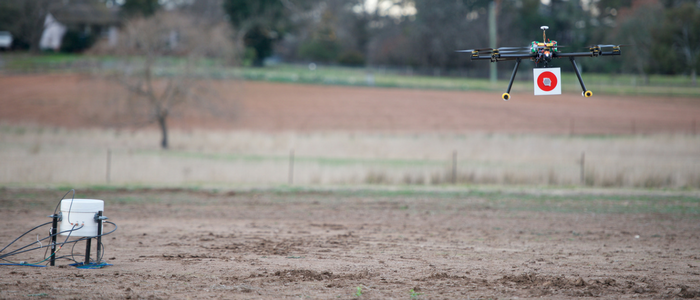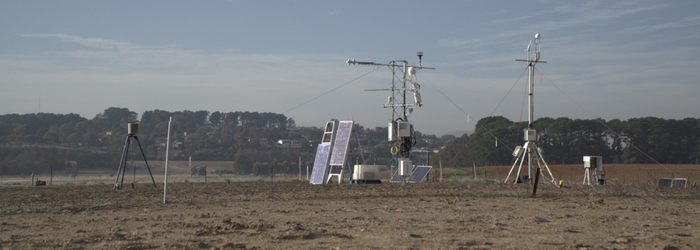News
Atmospheric monitoring: When one estimate is not enough
Published:16 March 2018
Atmospheric monitoring: When one estimate is not enough
An atmospheric monitoring experiment has shown that using a combination of techniques provides a more accurate estimate of possible greenhouse gas emissions rather than relying on a single technique.
Geoscience Australia led a large collaborative effort with 16 different research teams from Australia and Germany, working to improve the accuracy of local-scale gas emissions quantification techniques. The study is one of the most comprehensive assessments of atmospheric techniques used to estimate emission rates ever undertaken.
Being able to measure fugitive greenhouse gas emissions is important for supporting national and global greenhouse gas reduction targets. It is essential to have confidence in the techniques used to estimate methane emissions from the energy and agricultural sectors, natural greenhouse gas seepage, or potential carbon dioxide leakage from geological storage projects. By using a combined approach we can generate more accurate estimates for input into Australia's National Greenhouse Accounts.
The methane and carbon dioxide release experiment undertaken at the Ginninderra Controlled Release Facility in Canberra, Australia from April to June 2015, simultaneously compared eight different quantification techniques to determine the effectiveness of both stationary and mobile methods, and included a blind study where the actual release rate was unknown.
 Drone
carrying a laser reflector target was one of many techniques tested to measure
greenhouse gas emissions. Image credit: CSIRO
Drone
carrying a laser reflector target was one of many techniques tested to measure
greenhouse gas emissions. Image credit: CSIRO
Project leader, Dr Andrew Feitz explained that each of the research teams used different measurement techniques and models to produce an estimate of the actual release rate without knowing the true value.
"The individual estimates varied greatly, however by bringing all of the results together we were able to produce a much closer estimate of the release rate."
"In the methane release experiment, not one of uncertainty ranges for the estimates from eight different techniques contained the actual release rate," Dr Feitz said.
"By applying a combined approach, like those used in weather forecasting and climate models, we were able to greatly improve the accuracy of the estimate and provide an uncertainty range that contained the actual release rate."
Many novel and promising techniques were deployed not just for estimating the emission rate but also for gas detection and mapping applications. While not yet as sensitive as high precision gas analysers, the performance of miniaturised sensors is improving rapidly. This technology offers considerable potential for mobile applications, including automating gas monitoring and leak detection using ground robots or unmanned aerial vehicles.
 Monitoring equipment at the Geoscience Australia-CO2CRC Ginninderra Controlled Release Facility, Canberra
Monitoring equipment at the Geoscience Australia-CO2CRC Ginninderra Controlled Release Facility, Canberra
Further information
Contact:
Phone:
Email:




